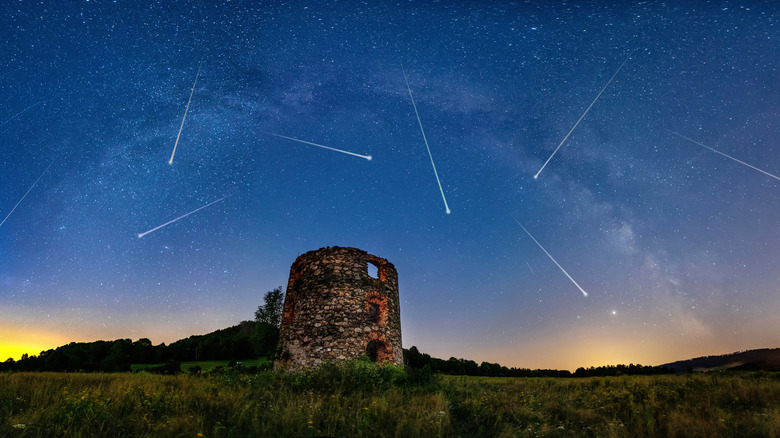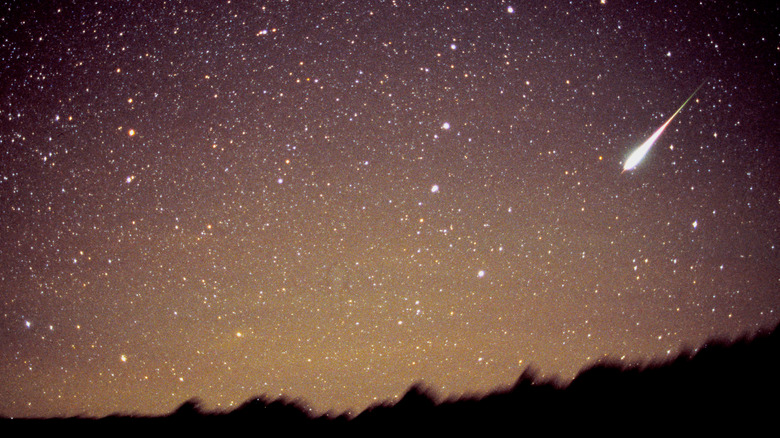Leonids Meteor Shower Reaches Its Peak This Week, Here's How To See It
Winter temperatures are well underway for most of the country, but don't let the cold stop you from seeing the annual Leonids meteor shower at its peak tonight/tomorrow — in the early morning hours of November 18. According to NASA, this is a "major" yearly shower event and is expected to run through December 2 this year. The Leonids are bright, colorful, and fast, traveling at around 44 miles per second — the fastest regularly-occurring meteor shower.
At peak shower times, viewers can expect to see at least 15 meteors per hour. However, American Meteor Society experts Mikiya Sato and Mikhail Maslov say that the Earth has likely encountered a cloud of debris from the comet that creates the meteors, which could potentially result in a more active shower — as many as 50 to 200 per hour, AcuuWeather calculated.
While that seems like an incredible amount of meteors, even this potential for a busier shower than normal isn't going to be the record-holder. On November 17, 1966, the sky came alive with thousands of Leonid meteors per minute — literally appearing like it's raining streaks of light. Our 2022 shower will be more of a drizzle by comparison.
To view the Leonid meteors, escape city lights and dress warm
The first tip for viewing the meteors — besides to dress in layers — is to plan to be outside at around midnight local time, but the meteors are anticipated to be visible until dawn. The shower will be most vibrant away from light pollution, so try to get outside of town and away from street lights if possible. NASA says you should lie down flat on your back — sleeping bags and warm blankets will be a must if there's already snow on the ground in your locale — and point your feet to the east.
It will be dark at first, but your eyes will adjust. Seeing the meteors is contingent on a cloud-free sky, but assuming there's clear weather, the meteors will be visible from everywhere in the world except Antarctica. You should not need binoculars to view the meteors. You likely want to kick back and take in the sight with your own eyes, but if photographing the Leonids is of interest to you, Nikon has a great guide for capturing meteor showers on camera.

